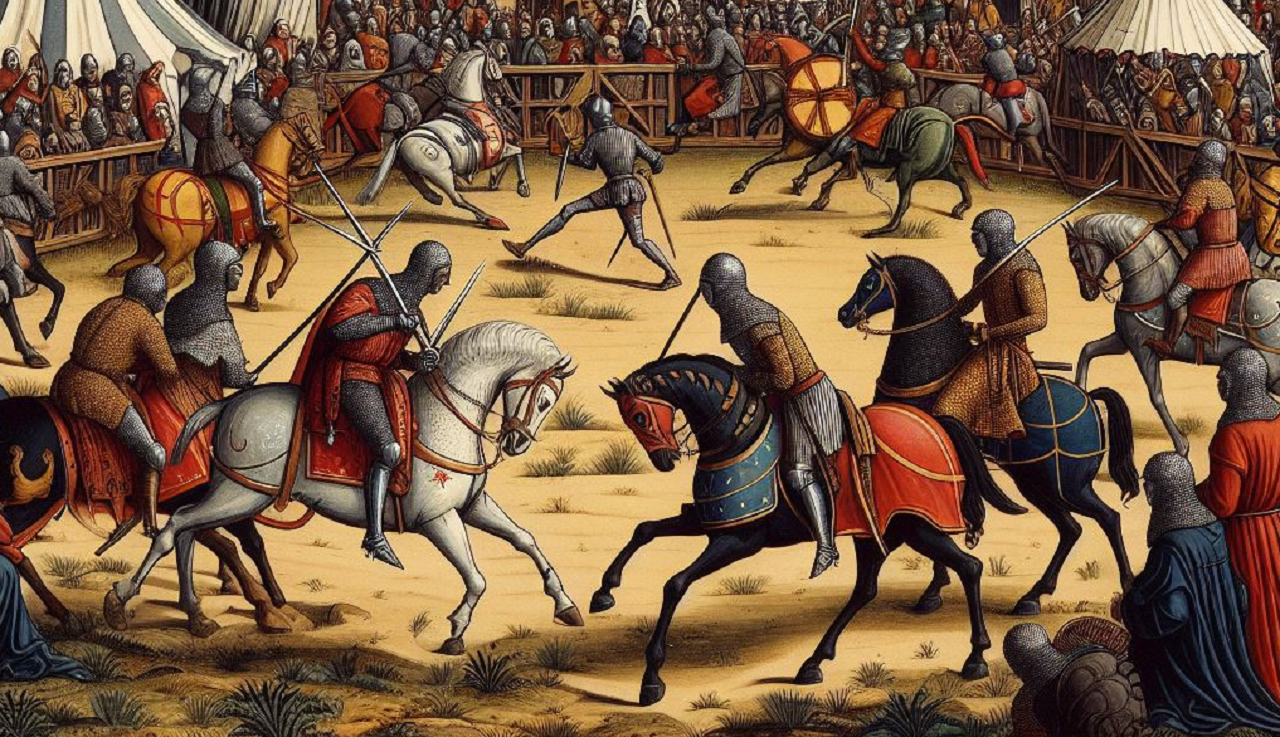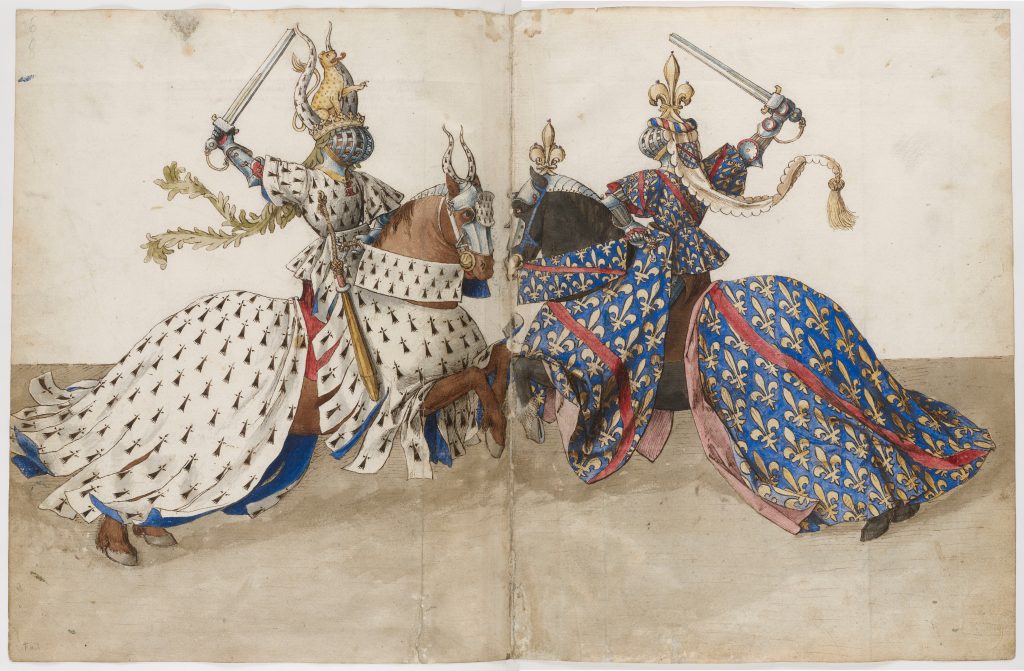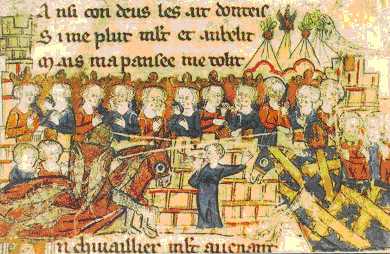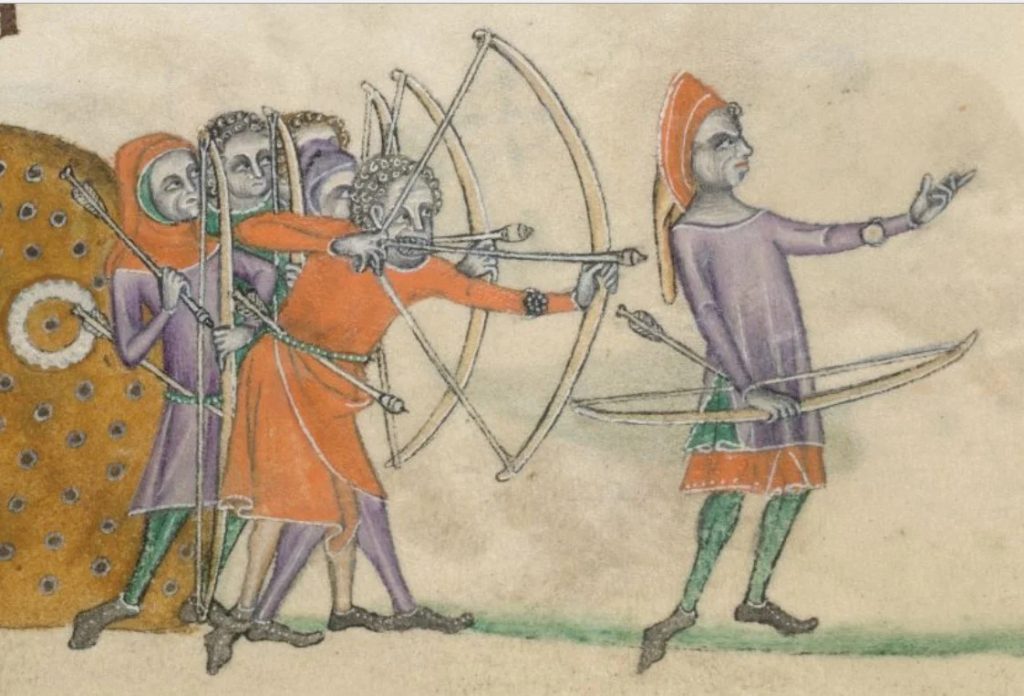
Participants in medieval jousting, AI-generated illustration (Bing)
Medieval jousting in France held a significant place in the cultural and social fabric of the era, serving as both a spectacle of martial skill and a symbol of aristocratic prestige. Dating back to the 11th century, jousting tournaments evolved from informal competitions into elaborate events that showcased the chivalric ideals of honor, bravery, and prowess in arms.

One of the defining features of French medieval jousting was its integration into the courtly culture of the time. Tournaments were not only displays of martial skill but also opportunities for knights to display their loyalty to their lords and demonstrate their prowess in the eyes of noblewomen and courtiers. The courts of French kings and nobles often hosted extravagant tournaments, complete with feasting, music, and poetry, which elevated jousting to a form of high entertainment befitting the aristocratic elite.
One fascinating aspect of medieval jousting is the elaborate and symbolic nature of the equipment used by knights. In addition to the practical considerations of protection and functionality, the armor and weaponry worn during jousting tournaments were often imbued with rich symbolism and intricate designs that conveyed messages about the wearer’s status, allegiances, and aspirations.
In medieval history, the Tournament of Chauvency stands out as a very interesting example of the grandeur, pageantry, and martial prowess that characterized the era of jousting tournaments. Held in the idyllic setting of Chauvency-le-Château in the year 1285, this legendary tournament captured the imagination of knights and nobles from across the region, as they gathered to celebrate the noble ideals of chivalry and honor.

Preparations and Festivities
In the months leading up to the tournament, preparations were underway in Chauvency-le-Château as the town bustled with activity. The tournament grounds were meticulously prepared, with colorful banners and pennants adorning the field, and a sprawling pavilion erected at the center where nobles and dignitaries would gather to witness the spectacle unfold.
The tournament festivities kicked off with a grand procession through the streets of Chauvency-le-Château, as knights and nobles paraded through the town in a display of pomp and pageantry. The air was filled with the sounds of trumpets and drums, adding to the sense of excitement and anticipation that permeated the atmosphere.
Chivalric Contests
The Tournament of Chauvency featured a diverse array of chivalric contests designed to showcase the skill and bravery of the participants. The jousting contests were among the most eagerly anticipated events, with knights charging at one another with lances couched and shields raised in a display of martial skill and prowess. The thunderous clash of lance on shield echoed across the field as competitors vied for supremacy.

In addition to the jousting contests, the tournament also included a variety of other chivalric games and challenges. Archery competitions tested the marksmanship of the knights, while foot combat showcased their skill with sword and shield. Each contest was fiercely contested, with honor and glory hanging in the balance.
More than 500 knights and other royalty participated in the event. Some of them include Rudolf I, King of Germany, Ottokar II, King of Bohemia (see below), Frederick III, Duke of Lorraine, Henry V the Blond, Count of Luxembourg, Margaret of Bar, his wife, Henry VI the Condemned, Count of Luxembourg, Béatrice d’Avesnes, wife of Henry VI of Luxembourg, and others.
Camaraderie and Fellowship
Amidst the spectacle of the tournament, the camaraderie and fellowship of the knights shone through.
As per some historians like Arlette Laret-Kayser, Louis V utilized tournaments as a means to highlight his family’s prestigious lineage, tracing back to their descent from Charlemagne and their ancestor Arnold I, Count of Chiny. Louis V even dispatched his sons to participate in the First Crusade, further enhancing the reputation and historical narrative of his family.
In the centuries that followed, the Tournament of Chauvency faded into the mists of time, its legacy preserved only in the pages of history books and the memories of those who bore witness to its grandeur. Yet, its spirit lives on as a shining example of the noble ideals that inspired knights to seek glory on the field of battle.
